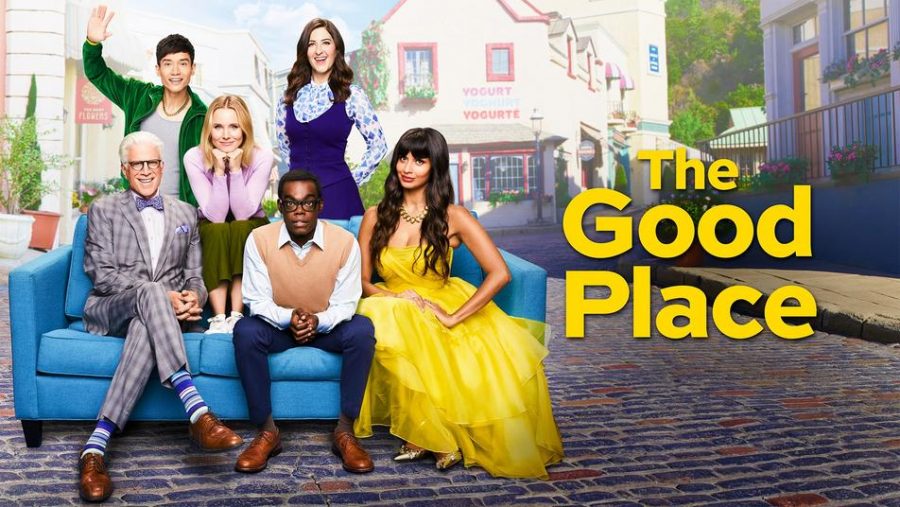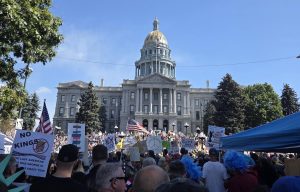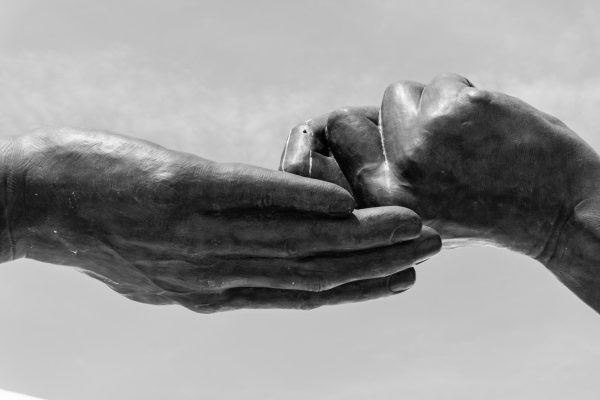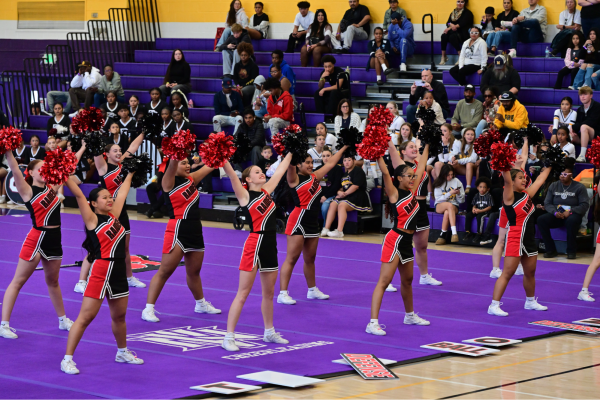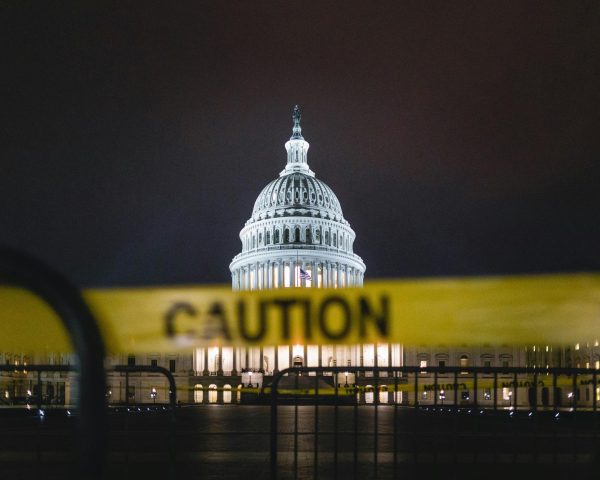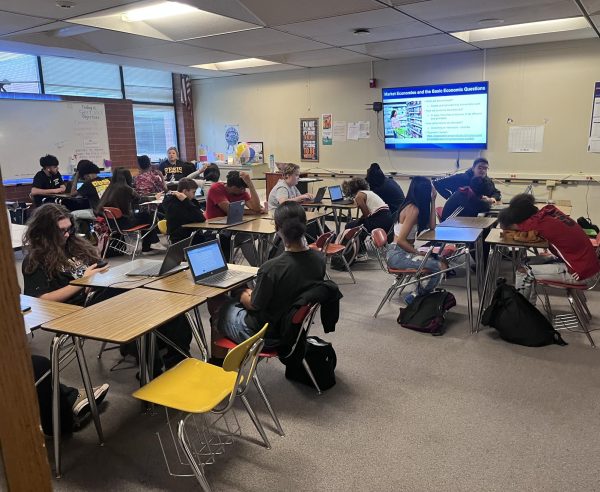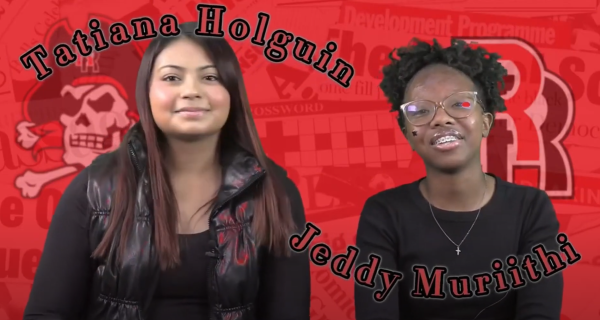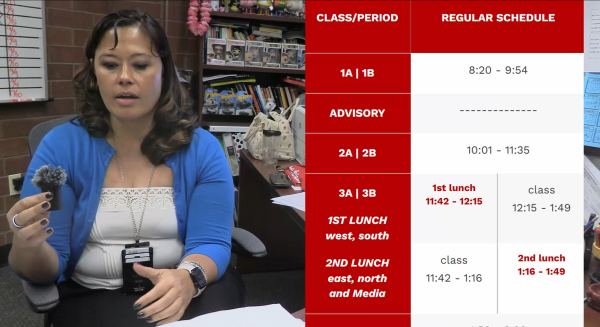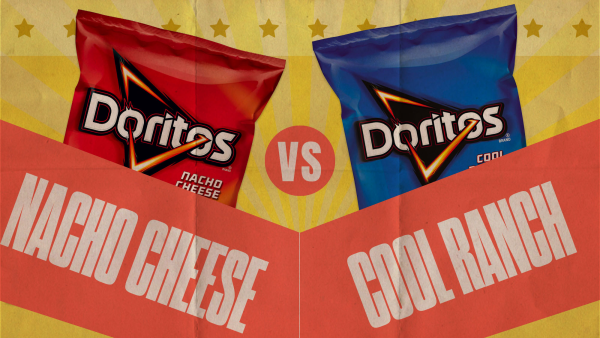The Good Place Seasons 1-3 Synopsis
The Good Place thumbnail for its fourth season, featuring the main cast of the show. (Top, left to right features: Jason Mendoza, Eleanor Shellstrop, and Janet) (Bottom left to right, Michael, Chidi Anagonye, and Tahani Al-Jamil) (The Good Place)
February 5, 2020
The Good Place is a show produced and written by Mike Schur, known for being a writer of various other comedy series such as The Office, Parks Recreation, and Brooklyn 99. His newest series, The Good Place, is one of the few series he has written for that does not exceed five seasons. Unlike the other shows, The Good Place has a set concrete ending — being that this particular show has a plotline that was difficult to draw out compared to the office shenanigans of the other three shows.
As The Good Place’s fourth and final season has ended, there is still time for some to binge the previous three seasons. The first three seasons are available to watch on Netflix right now, and the fourth is yet to be added along with the rest.
The concept of The Good Place is pretty simple:
“When Eleanor Shellstrop finds herself in the afterlife, she’s both relieved and surprised that she’s made it into the Good Place. But it doesn’t take long for Eleanor to realize she’s there by mistake. She hides in plain sight from the Good Place’s architect, Michael, and his all-knowing assistant, Janet. Her seemingly perfect neighbors, Tahani and Jason, and open-hearted soulmate, Chidi, help her realize that it’s never too late to change. With the help of her new friends — and a few enemies — Eleanor becomes determined to shed her old way of life in hopes of discovering a new one in the afterlife.” The synopsis from The Good Place Wiki said.
Compared to the other shows Schur worked on, there is a clear difference on content from writing for more slice-of-life shows to something that has a bit more seriousness to the overall tone of the show.
SPOILERS FOR SEASONS 1-3; A BRIEF SYNOPSIS
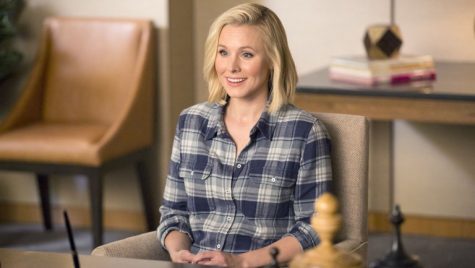
Like any other start to the show, The Good Place sets up the main narrative; the core protagonist, Eleanor, is struggling to be a better person to earn her place in the Good Place but she led a life that was selfish — keeping to her personal motto of “You don’t owe me anything, I don’t owe you anything.”
When she first meets her soulmate, Chidi Anagonye, she admits to him that she isn’t supposed to be in the Good Place. He offers Eleanor to take ethics lessons to help her earn her place in the Good Place. When he refuses to help her when her selfishness gets to be too much, she feels bad. Eleanor herself admits that she lashes out when she is surrounded by people she thinks are better than her, keeping to the “you don’t owe me anything, I don’t owe you anything” attitude during her life.
In Season One, there is a plot twist that shocked many fans and in turn, turns the story on its head. In the words of Eleanor, being the person who tends to figure it out the most, “THIS is the Bad Place!”
By the second season, it explores Michael’s side of the story, as he isn’t a Good Place architect, but a Bad Place one — testing a new way to torture humans, by making them torture themselves.
He resets the human’s memories over and over again, time after time, until cycle 802, where he is overrun by another younger demon by the name of Vicky who threatens to tell the boss about his failed attempts when he still thinks that this is the second trial of the experiment. The demons who work to make the facade of the Good Place come to life feel Michael’s incompetence, as over and over again, Eleanor figures out that the ‘Good Place’ isn’t actually the Good Place.
Michael is then forced to work with the humans on one condition; he has to sit with them on ethics lessons just like the rest of them. He grasps what it means to be a moral human being. It’s because of these lessons that he begins to care about what happens to humans, how they have faults, and how they have the will to change. Michael and all four of the humans become close friends.
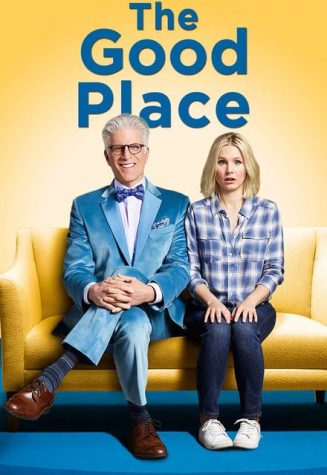
Michael’s goal now is to help the humans get to the actual Good Place, but proposing a new system where the points that determine how good or bad a person is is modified to judge a human better. When the idea was proposed to the Judge Gen, — short for Hydrogen — Michael is given an opportunity to prove that humans can change.
And that’s where the majority of season 3 takes place in this new experiment. The details will be spared as not to make this a whole synopsis, however, it is important to at least get this much context beforehand.
The best way to describe just how human it felt, a review from theverge.com says, “It was a show about trying, about a secular faith in living a noble life without the guarantee of a material reward. It showed a cast of chronically selfish people learning to mitigate their selfishness by caring more for each other…”
The writing on this show is very solid and consistent. It is believable that this is what these people would do in a situation they are in; a rag-tag found family trope that anyone like myself personally loves. They’re so down to earth and so human about their situation, even when they meet like strangers over and over again — improving each other because even though they’re selected individually to torture each other, they also grow and improve together.
The show tackles moral topics of discussion on the show too, from the trolley problem to what we owe to each other as people. This show has ended and there is one central lesson in this story: people have the ability to change when they get constant and external love. For what it’s worth, isn’t that the sole concept of seeing the good in people?
